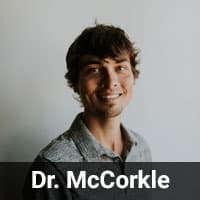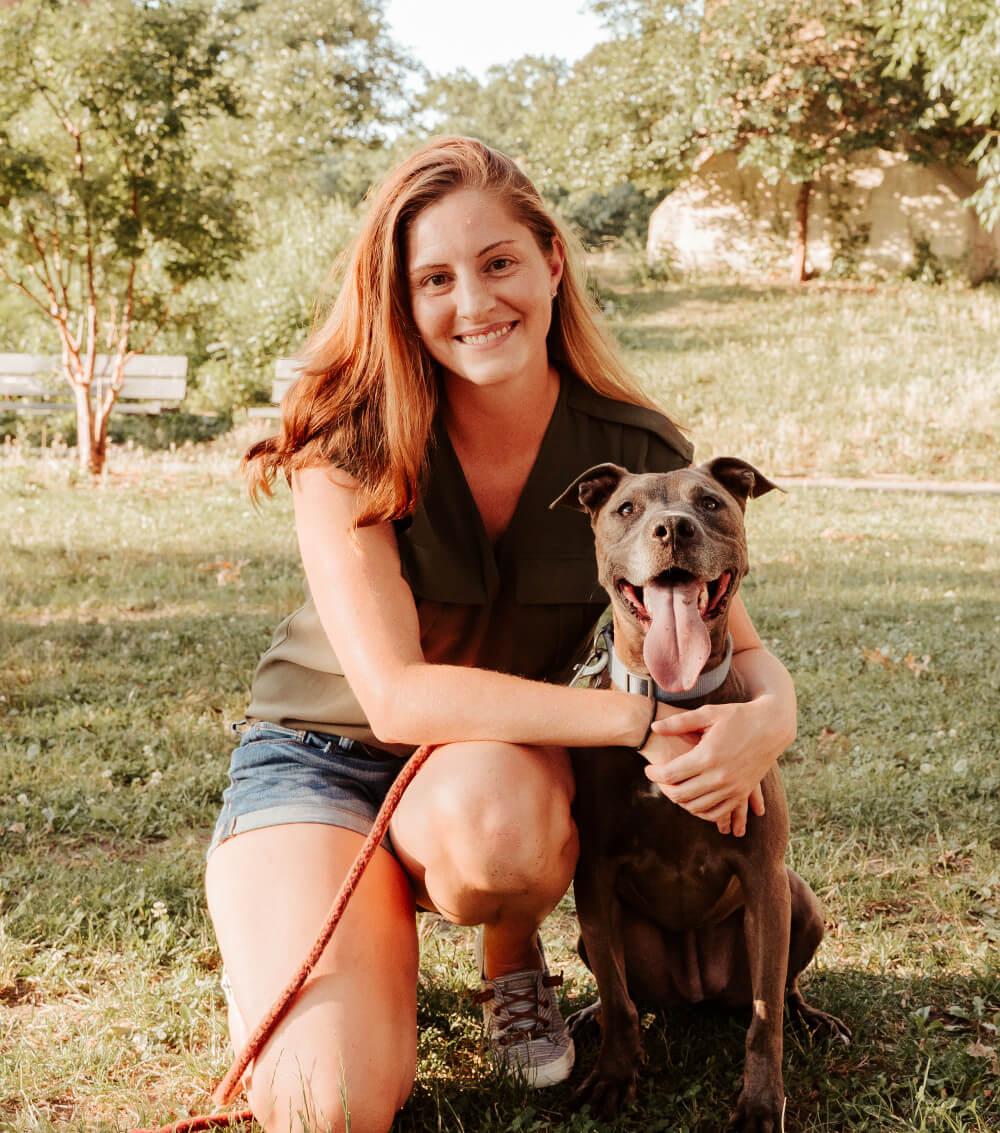Dog Dental Care Advice and Recommendations From Veterinarians
Your dog’s dental care is vital to their overall health, with poor dental hygiene leading to serious disease that can cause pain, impact their immune system, and affect vital organs. The mouth has an abundant supply of blood, therefore infection in the mouth can easily enter the bloodstream and affect your dog’s heart, kidneys, liver, and immune system – causing serious health complications. Dental disease can also be painful for your dog, impacting their quality of life. At GeniusVets, we believe that pet care information should come from veterinarians and not the internet, especially with such a serious topic. That’s why we’ve taken dog dentistry FAQs, sent these questions to renowned veterinarians across the U.S., and compiled their replies to get you useful information that you can trust.
While we've sourced all of the dental health information and recommendations below directly from leading veterinarians across the country, please make sure to seek out the advice of your own veterinarian or find a trusted vet near you using the GeniusVets Directory.
What are some signs and symptoms of dental disease?
Again, every dog is different so there will be varying signs that something ominous could be occurring in your dog’s mouth. It's essential that you observe your dog for any changes in behavior that could indicate they are in pain.
In general, the signs and symptoms that your dog could have dental disease are as follows:
- Bad breath – This is a red flag for gum disease or an infection in the gum tissue. While dogs are stereotypically associated with having “dog breath,” bad breath in a pet is actually not normal. The infection and resulting inflammation is the cause of the bad breath. The more the dental disease progresses, the worse your dog’s breath will get.
- Food Shifting – As dental disease progresses, it’s common for food to fall out of a dog’s mouth when they try to chew. This is because they’re only chewing on one side of their mouth to avoid the pain felt on the infected side.
- Behavior Change – A dog may hide, become irritable, stop chewing their toys, or want to be left alone when silently suffering from dental disease. They might also avoid their food, or only eat soft food if offered both.
- Black or Brown Tooth – This is a sign of late-stage dental disease. Before a tooth turns brown or black, earlier signs appear such as reddened gums or subtle changes in the tooth color.
What are some of the common dental diseases in dogs?
Gingivitis is the most common dental disease in dogs, which is swollen, inflamed, and painful gums. In some cases, the dog may bleed when they chew on something hard. As Gingivitis progresses, it evolves into periodontal disease, which is a disease underneath the gum line along the root of the tooth, including the bone. At this point, bone loss and abscesses are likely. Because plaque and tartar build up rapidly, it’s estimated that 80 percent of dogs will have some form of dental disease by two years old.
Broken and fractured teeth are also another common oral issue in dogs, which is almost expected considering how much they chew. Identifying broken teeth is important because they can cause pain due to exposed roots, and dogs don’t often show signs of a broken tooth. Cysts under the gum line are also common in English Bulldogs, pugs, and other “squished face” (brachiocephalic) breeds. Their face shape makes them prone to impacted teeth that can lead to these cysts. Sometimes, dogs present with benign tumors or growths in the mouth. However, some very concerning cancers can occur in the mouth that present much like dental disease.
How can I care for my dog's teeth at home?
Although every dog is different and you’ll surely learn what works and what doesn’t for your faithful friend, there are some basic things you can do at home to keep your dog’s teeth healthy.
Some of the things you can do to care for your dog’s teeth at home are as follows:
- Daily Teeth Brushing – This is an essential part of your dog’s dental health, with the abrasive action of a toothbrush combined with pet-specific toothpaste helping to keep tartar and plaque build-up at bay. Just keep in mind that human toothpaste is not a substitute for pet-specific toothpaste, as dogs cannot spit—that means ingesting anything other than dog-friendly toothpaste could prove to be toxic for them. You can experiment and find out whether your dog likes chicken, beef, or seafood-flavored toothpaste. It’s important to start the daily teeth-brushing process with your dog at a young age so they get used to it. Consistency is key, as tartar and plaque build-up happens every day and will accumulate quickly without brushing. If you can’t manage daily brushing, most veterinarians will tell you that three days a week is an optimal goal.
- Chews – Chews such as Greenies or OraVet can also help maintain your dog’s dental health. Be sure to look for the VOHC (Veterinary Oral Health Council) seal on the container, which means the product actually does what it claims. OraVet chews have a brushing action as the dog chews, and also release a plaque repellent that is spread across the teeth with the dog’s own saliva as they chew.
- Mouth Water Additive – This is a passive way of helping to reduce plaque buildup, and is less effective in general since it’s really intended to freshen a dog’s breath.
Products Recommended By Veterinarians for Dog Dental Care at Home
Oral health is a crucial part of your dog’s overall wellness. Regular dental care can prevent bad breath, plaque and tartar buildup, gum disease, and even systemic illness. The products below are trusted by veterinarians to help maintain clean teeth, fresh breath, and a healthy mouth at every stage of life.
Dog Toothbrushes & Toothpastes
- Dog Finger Tooth Brush Wipes – A simple and gentle way to start brushing your dog’s teeth.
- Vet’s Best Toothbrush and Toothpaste Set – Includes a brush and vet-formulated toothpaste for routine oral hygiene.
- Virbac C.E.T. Enzymatic Toothpaste – Enzymatic formula to eliminate plaque, tartar, and bad breath.
- Virbac Silicone Finger Brush Kit – Kit includes a finger brush and poultry-flavored enzymatic toothpaste.
- Senior Dog Dental Kit – Designed for older dogs with sensitive teeth or gum concerns.
Dog Dental Chews & Treats
- Yummy Combs Dental Chews – Deep-cleaning shape designed to scrub teeth and gums.
- Blue Buffalo Dental Chews – A tasty way to support oral health while your dog chews.
- Greenies – Popular dental treats that reduce tartar and freshen breath.
- Virbac C.E.T. HEXtra Premium Oral Chews – Combines abrasive texture with antiseptic protection.
Additional Dental Support for Your Dog
- Dechra Vetradent Water Additive – Helps fight plaque and tartar while freshening breath through your dog’s daily water.
- Dechra Vetradent Dental Wipes – Quick and easy dental cleaning alternative when brushing isn’t an option.
- Dechra Vetradent Dental Spray – Simple spray application to help manage bacteria and reduce plaque buildup.
- Pet Dental Water Additive – Easy to add to your dog’s water to reduce bacteria and plaque.
- Twist Lick Oragel – On-the-go gel for freshening breath and soothing gums.
- VetriScience Healthy Mouth Dog Dental Powder – A powder you can sprinkle over food to support oral hygiene (link coming soon).
Top Picks
For a complete at-home oral care routine, the Vet’s Best Toothbrush and Toothpaste Set is a great place to start and easy to use daily.
Try the Vet’s Best Dental Set Here
Need a convenient way to clean teeth between brushes? The Yummy Combs Dental Chews are a favorite among veterinarians and dogs alike for their effective design and taste.
For advanced plaque control, Virbac C.E.T. Enzymatic Toothpaste is a gold standard in veterinary oral care and comes in dog-approved flavors.
Why is early detection and diagnosis of dental disease so important?
Early detection of dental disease is the key to keeping your dog’s teeth intact. Dental disease often progresses to the point of offering no other option than tooth extraction, but dogs need their teeth for a variety of reasons. Early detection can spare the infected tooth, save you money in more progressive treatments, and prevent your dog from experiencing unnecessary pain. Early detection means it’s easier to fix, and often resolved with a thorough cleaning.
How often should a dog's teeth be checked?
At a minimum, your dog’s teeth should be checked annually. Twice a year is recommended so your veterinarian can determine any changes from the previous visit and discover any broken teeth. Older dogs are more prone to dental disease, so they should be checked more than once a year.
What does a professional dental cleaning involve?
Professional dental cleaning requires anesthesia and is much more involved than when a human visits their dentist twice a year. This is because dogs don’t cooperate as willingly as humans, and a veterinarian specializing in oral health cannot fully assess a dog’s mouth when they’re alert.
A professional dental cleaning involves a full mouth dental x-ray for a thorough diagnosis, examination of each individual tooth, probing for gum health, and a conversation about what treatment – if any – is needed. A thorough cleaning of the teeth, including under the gum line, will be done using an ultrasonic scaler. A breathing tube will be used to protect your dog’s airway.
If you have further questions about your dog’s dental health, reach out to your veterinarian. If you don't have one yet, we can help you find a local veterinarian!
The Following Veterinarians
Contributed To The Dog Dentistry Information On This Page


The Ultimate Guide
to Dog Care
This free guide is an indispensable manual for dog ownership. Filled with veterinary advice and recommendations on every important topic at each stage of your dog’s life, this is all the stuff that responsible dog owners need to know. That is why we are making it free!






